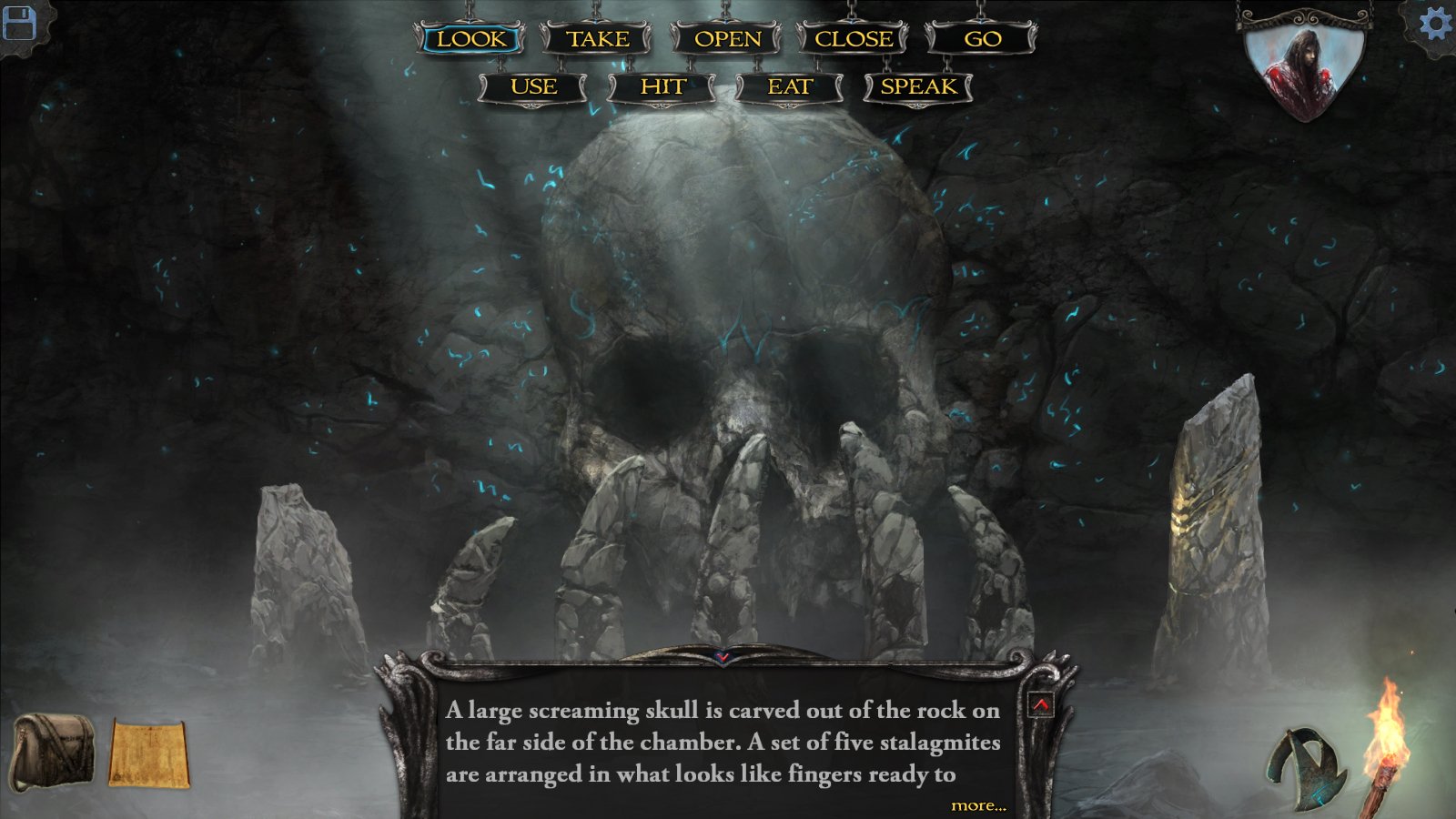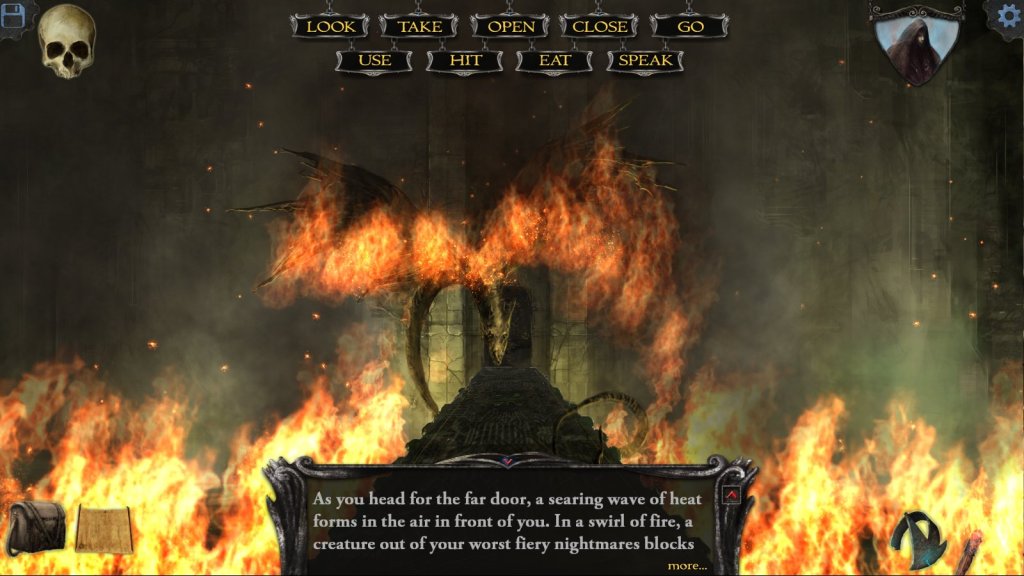Go back to the shadows!
Shadowgate is a remake of the classic 1987 adventure game. Designed by the original creators Karl Roelofs and Dave Marsh, and funded through Kickstarter, the game is clearly a labor of love. It’s an incredibly faithful remake, and at first I was worried that it might be a little too faithful in execution, since it appeared to feature some of the same rooms and puzzles as the original version of the game.
With the inclusion of newer puzzles, these puzzle rooms turn out more to be of a kind of homage than literal remakes in execution, making Shadowgate an engaging game from the perspective of both players of the original game and those new to the franchise. It’s a fascinating game, and one that can now execute the epic fantasy vision the original aspired to with greater fidelity.
The meat and potatoes of how Shadowgate works is actually more similar to the old Infocom text-based games of the early '80s. You have a number of commands and a series of rooms in which it’s possible to interact with objects (or use inventory items to do so) in order to solve puzzles. Indeed, Shadowgate may be a visual adventure, but the play style is more similar to the original text-based Zork and The Hitchhiker’s Guide to the Galaxy games than the SCUMM system games (like Maniac Mansion, Curse of Monkey Island) that followed.
How much enjoyment you get out of Shadowgate’s gameplay, which is built on devious puzzles that involve backtracking, carefully paying attention to your limited resources, and using the right items at the right time, may depend on how much you enjoy an unforgiving puzzle system that often rewards you with death for the wrong decision. Even on the easiest of the three difficulties, Shadowgate does very little handholding, and that's with the addition of Yorick, a wisecracking talking skull that dispenses only the most incredibly vague hints when asked. It is decidedly “old-school” in its approach, and the onus is on the player to figure the puzzles out through trial and error.
Shadowgate has a speed-painting aesthetic that is absolutely gorgeous. The original game’s 8-bit look was limiting and graphically paid tribute to the Dungeons and Dragons art of the era. The current game benefits from over 25 years of fantasy art and design; and the influence of Magic: The Gathering and the Lord of the Rings films is easy to see in the gorgeous environmental backgrounds by Chris Cold, and—in a slightly different style—the motion comic-styled cinematics by Wang Ling and Damian Audino. Additionally the game has a new cinematic score by Rich Douglas, but this can be replaced by the original 8-bit NES score by Hiroyuki Masuno.

Shadowgate, like many early adventure games, is at its most frustrating when the goal of a puzzle isn’t clear. The question of whether the player is supposed to try to kill a dragon, or just steal something from it, can be maddening until you know what the next puzzle is. At one point I was inhibited because I didn’t realize I had to use the “Go” command to move further up one of the castle towers instead of being able to use the standard double-click. In a similar situation, I’d solved a puzzle, but instead of trying to “take” an object, I needed to “open” it in order to move forward, even though “open” didn’t make the most sense.
Still, Shadowgate emerges as a great throwback to an era of intensely difficult puzzle gameplay, and it benefits from better storytelling tools and maddening puzzle design, whose entire goal is to stump players until they think about it from another direction. Shadowgate launches on Mac and PC on Steam on August 21st, as well as Android and iOS devices, with a price point of $19.99.
Code provided by publisher. Review based on Steam version. Also available on Mac, Android, and iOS.
-
Classic Shadowgate gameplay.
-
New maddening puzzles.
-
Vague puzzle objectives.
-
Gorgeous art/motion comic animations.
-
Old School UI can get tiresome to navigate.







